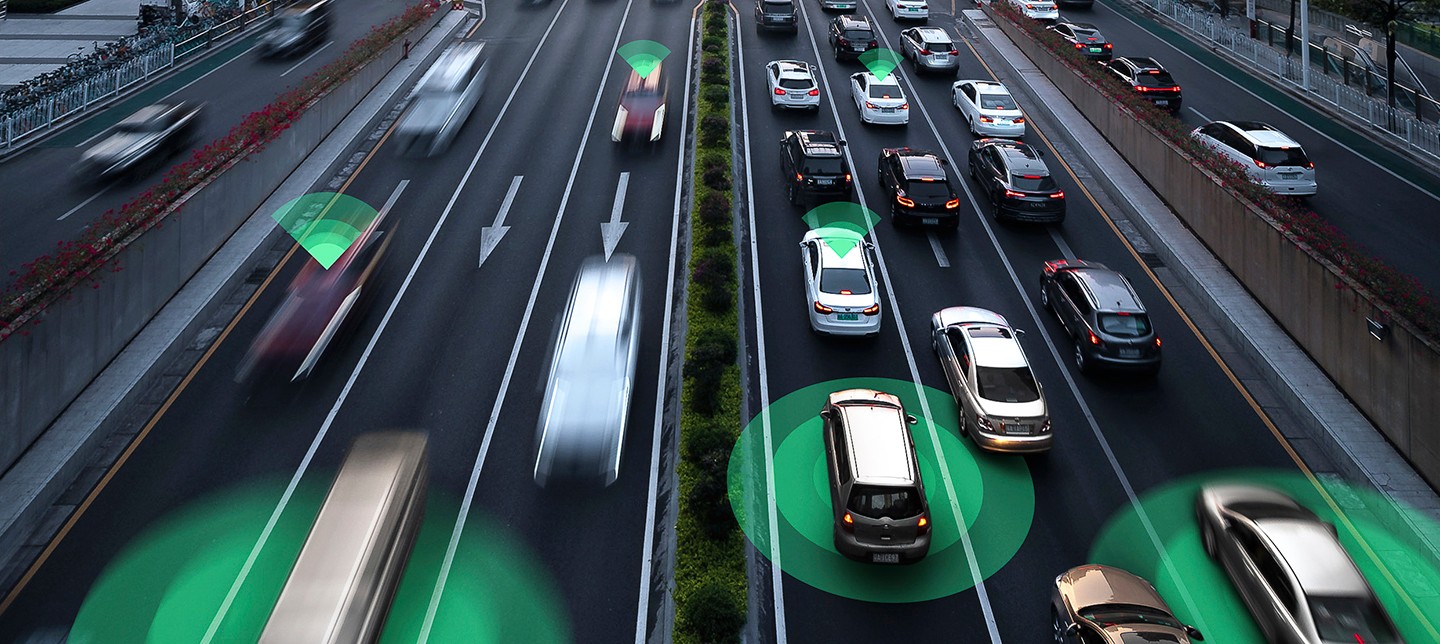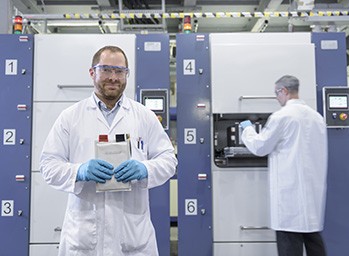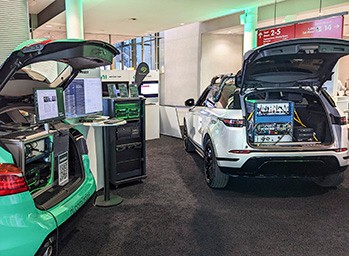Software-Defined Vehicle Architecture
For most of their existence, automobiles were solely mechanical in nature. Today’s new cars resemble a device on wheels with sensors, cameras, processors, in-vehicle systems, and wireless connections to external networks. The software-defined vehicle includes the following core components:
- High Performance Electronic Control Units—ECUs are onboard computers dedicated to specific electrical systems and vehicle functions. They include the engine control module, power steering module, powertrain control module, brake control module, and body control module. ECUs can include multiple high-performance processors and are connected to their respective sensors, cameras, and hardware to execute perception algorithms often based on AI and Machine Learning.
- Sensors, Cameras, and Other Hardware—It’s the job of specialized vehicle hardware to collect and send data to ECUs, allowing the onboard computers to process information. ADAS features depend upon this coordination for safe operation of a car or truck to sense, think and act accordingly.
- Automotive Operating Systems—A real-time operating system, or RTOS, is necessary to process information from ECUs and coordinate a response when necessary. They may interact with the driver through a screens and heads up displays and can even deliver warnings about vehicle performance. Automobiles may utilize more than one RTOS to manage different functions.
- Communication Networks—Wireless functionality allows the software-defined car to join the Internet of Things (IoT), connecting to external networks for data like traffic information and over-the-air (OTA) software updates. SDV communication technology includes vehicle-to-vehicle (V2V), vehicle-to-infrastructure (V2I), and vehicle-to-everything (V2X) capabilities. The sending and receiving of data is sometimes referred to as car telematics and can even allow OEMs to remotely tune-up performance. Apart from comminucating with the vehicle’s exterior there are also multiple internal networks based on traditional CAN and higher bandwidth Automotive Ethernet networks which allow the different sensors and ECUs to share and exchange data to make the car work.
SDV Use Cases
The marriage of automotive software and hardware has many potential benefits for drivers:
- Better vehicle performance—The data recorded and transmitted by sensors helps automotive engineers identify issues, some of which can be addressed through OTA software updates.
- Safer cars and trucks—The software-defined vehicle makes ADAS possible. These features include capabilities like collision avoidance, lane departure warnings, blind spot monitoring, and pedestrian detection. ADAS is a steppingstone to autonomous driving, and the SDV is a core part of both efforts.
- Reliable fleet management—Businesses and government agencies that maintain vehicle fleets will have access to information to help them optimize routes, reduce downtime, and better maintain cars and trucks, all of which can result in lower costs.
- Constant connectivity—The ability to connect to various networks allows for many interesting use-cases. Vehicle-to-infrastructure (V2I) communication could enable cars to send and receive traffic data so the appropriate transportation authority can adjust stoplight timing, optimize public transit routes, and even change signals to clear the way for oncoming emergency vehicles, bringing the smart city closer to reality. Vehicle-to-vehicle (V2V) networks would make it possible for cars to coordinate movements such as merging to reduce gridlock. Taken together, these external connections are referred to as vehicle-to-everything (V2X).
- Reduced costs and longer vehicle life—Performance monitoring, vehicle diagnostics, OTA updates, and ADAS features will likely result in lower maintenance costs and a longer lifetime on the road. A car or truck that can recommend preventive maintenance and help avoid collisions should reduce the overall cost of ownership. At the same time, OTA updates allows the vehicle to evolve during its life cycle and therefore stay state of the art, similar to how we are enjoying our smart phones today.
NI and Testing the Software-Defined Vehicle
Automotive test has been growing from testing electromechanical components into software validation embedded into ECUs and with the introduction of the SDV this evolution has been accelerated further. The software-defined vehicle increases demands on engineers by adding ECUs with semiconductors, wireless technology, multiple sensors, automotive operating systems, and more to an already complex machine.
Compounding the challenge are automotive test methodologies rooted in a legacy design and manufacturing process, prescribed by the V-diagram. These approaches tend to be inflexible, slow, and therefore poorly suited for accelerated software and hardware test and validation. However, it’s not possible to simply adopt electronics test processes as automotive companies must comply with strict government safety regulations.
The pace of change and the pressure to be first-to-market make adaptability and the introduction of agile development including Continous Integration and Continous Deployment (CI/CD) key in evaluating and evolving SDV systems. NI has long had a presence in transportation and semiconductor test with software-defined, modular hardware systems that offer and help our customers to quickly create custom systems, optimized for their unique application needs. From the very beginning NI’s systems and solutions have always been software-define by nature, which makes them the perfect counterpart in testing the SDV in particular for evolving with them along their whole development and deployment life cycle.
For example, NI TestStand software allows engineers to develop, deploy, and debug automated production test systems for ECUs. VeriStand is used for hardware-in-the-loop (HIL) testing, so engineers can see how ECUs respond when integrated with other systems based on simulations and models to shift testing and validation to earlier stages.
Our modular hardware, such as PXI instruments, can be easily added or removed from a test or validation system, as application requirements evolve – not only by NI engineers, but by the end users themselves. Out-of-the-box solutions like the NI ECU Test System (ECUTS) merge software, hardware, and services to simplify the ECU production test process.
NI supports each of these aspects and more of SDV development and test with a commitment to OEMs and tier 1 suppliers demonstrated over many years in the automotive and electronics industries.
The software-defined vehicle is revolutionizing transportation. Consumers expect ongoing innovative features in their cars and not just once when they are adding the initial purchase. and new testing tools and methodologies are key to making sure the next generation of vehicles offers cutting-edge technologies in a safe, reliable automobile – and NI is partnering with OEMs and Suppliers to make test their strategic advantage in achieving their ambitious engineering goals.




